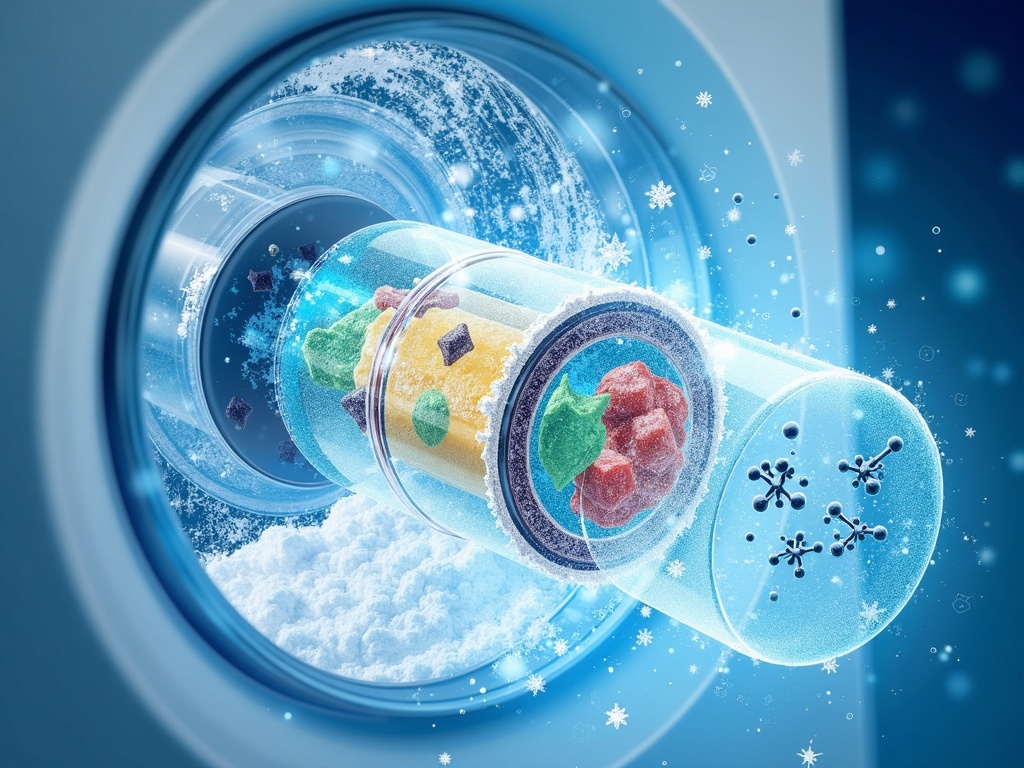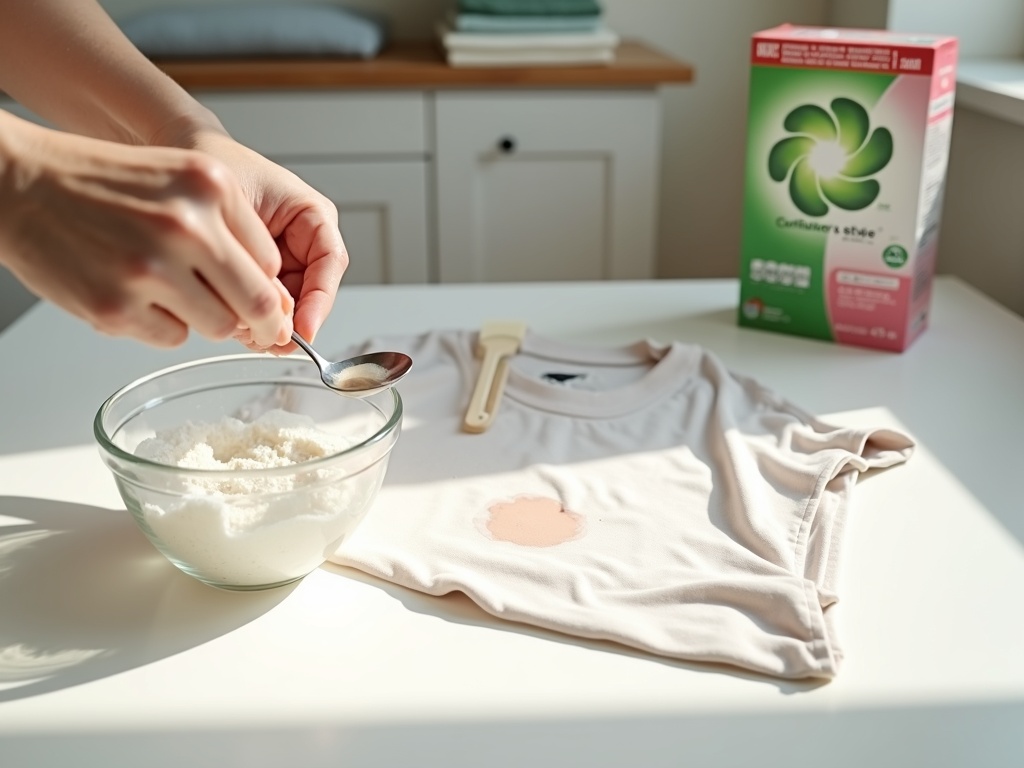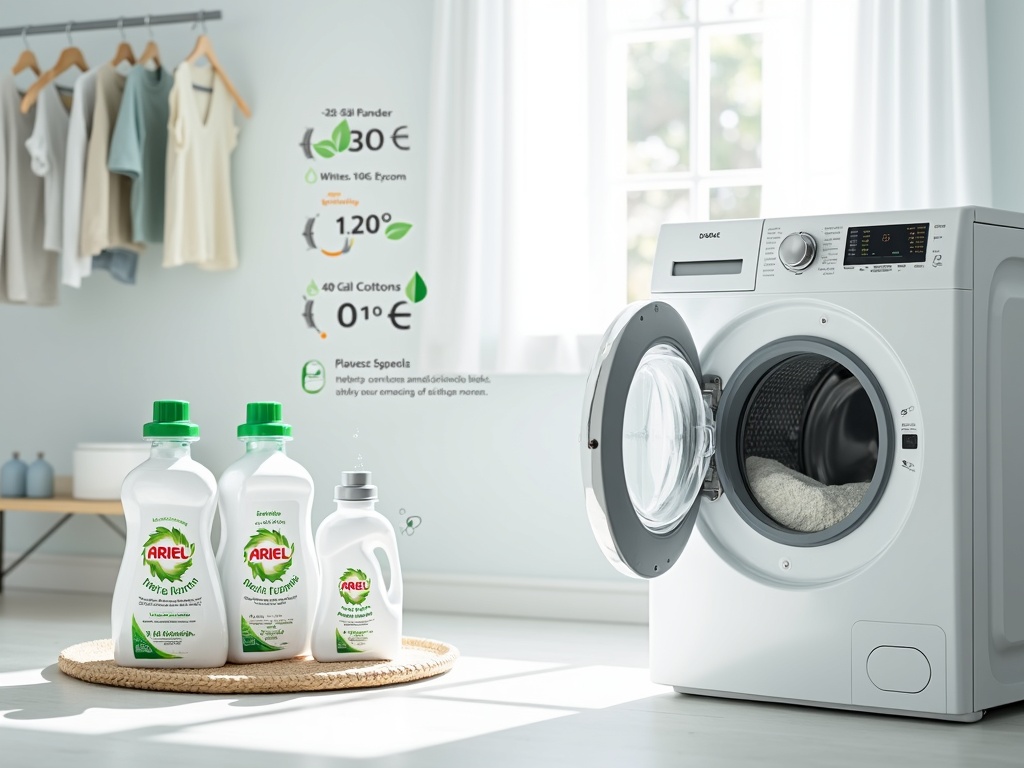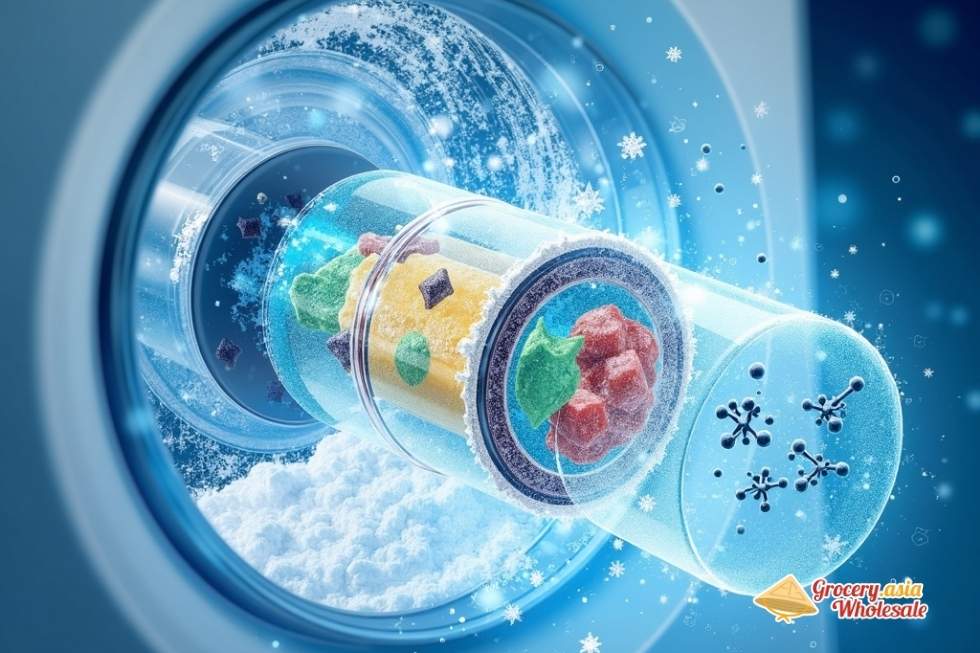No products in the cart.
Home Care, Laundry Detergent
How To Use Ariel Laundry Detergent Powder For Stains
Ariel laundry detergent powder combines advanced enzyme technology, oxygen-based bleach, and strong surfactants to tackle different stain types through targeted molecular breakdown and lifting action. The key to maximizing stain removal effectiveness lies in proper stain identification, pre-treatment techniques like paste application and soaking, and selecting the correct dosage and temperature settings for your specific washing conditions.
Table of Contents
Key Takeaways
- Identify stain types first – Protein, oil-based, tannin, and dye-based stains each require different treatment approaches, with proper identification improving removal success by over 60%
- Use the paste method for stubborn stains – Mix 2 parts Ariel powder with 1 part cool water, apply directly to stains for 10–15 minutes before washing to increase cleaning concentration by up to 10 times
- Soak set-in stains effectively – Dissolve 65g of powder in 5–7 liters of 40°C water. Soak colored items for up to 1 hour and whites for up to 2 hours to improve removal by 50%
- Match dosage to water conditions – Adjust powder amounts based on load size and increase by 30% in hard water areas, while using 40°C as the optimal temperature for enzyme activation
- Choose the right Ariel variant – Select Original for whites with bleach action, Colour & Style for colored fabrics, or Sensitive for hypoallergenic needs based on your specific laundry requirements
The Science Behind Ariel’s Stain-Fighting Power
I’ve discovered that Ariel powder’s exceptional cleaning performance stems from its sophisticated blend of enzymes, surfactants, and oxygen-based bleach technology. Each component works in harmony to tackle different types of stains and soils, making this laundry detergent for washing machine use highly effective across various fabric types and stain categories.
Enzyme Technology for Targeted Stain Removal
Ariel’s enzyme system consists of three primary types, each designed to break down specific stain categories:
- Protease enzymes target protein-based stains including blood, grass, and egg by breaking down protein molecules into smaller, water-soluble fragments.
- Amylase enzymes specialize in starch-based stains such as gravy and chocolate, converting complex starches into simple sugars that wash away easily.
- Lipase enzymes focus on grease and oil stains like butter and lipstick, breaking down fat molecules for complete removal.
These enzymes activate during the wash cycle, working at the molecular level to pre-digest stains before the mechanical action and other detergent components complete the cleaning process. The enzyme blend ensures that both fresh and set-in stains receive targeted treatment based on their chemical composition.
The Power of Oxygen-Based Bleach
For whites specifically, Ariel Original incorporates Sodium Percarbonate, an oxygen-based bleach that releases active oxygen molecules when dissolved in water. This oxygen release mechanism helps eliminate colored stains such as tea, coffee, and wine without the harshness of chlorine bleach. The oxygen molecules penetrate deep into fabric fibers, breaking apart the chemical bonds that create visible stains while remaining gentle on fabric integrity.
Surfactants: The Workhorses of Cleaning
Surfactants form the backbone of Ariel’s cleaning system, functioning as the primary dirt and oil removal mechanism. These molecules possess both water-loving and oil-loving properties, allowing them to surround and lift away greasy soils and embedded dirt particles from fabric fibers. Once surrounded by surfactants, dirt and oils become suspended in the wash water rather than redepositing on clean fabrics.
Temperature Matters
Temperature plays a crucial role in Ariel’s oxygen-bleach effectiveness. Research shows that the oxygen-bleach system performs 30–40% more effectively at removing colored stains when used at 40°C compared to 20°C. This temperature increase accelerates the oxygen release process and enhances enzyme activity, resulting in superior stain removal performance. However, washing machine works well with Ariel detergent at various temperatures, making it versatile for different fabric care requirements.
Synergistic Cleaning Action
The synergy between these components creates Ariel’s deep cleaning capability. While enzymes break down specific stain types, surfactants lift the broken-down particles away from fabrics, and oxygen bleach tackles color-based stains. This multi-pronged approach ensures comprehensive cleaning that addresses the full spectrum of household soils and stains.
Optimizing Washing Results
Understanding this science helps optimize washing results. Pre-treating heavily stained items allows enzymes more time to work on stubborn spots. Similarly, using washing machine with Ariel at appropriate temperatures maximizes the oxygen-bleach system’s effectiveness while protecting fabric integrity.
I’ve found that this scientific foundation explains why proper measurement and dissolution matter so much for optimal results. Each component needs adequate water contact and time to activate fully. Using Ariel laundry detergent powder effectively means allowing these sophisticated cleaning mechanisms to work as intended through proper dosing, temperature selection, and wash cycle timing.
The combination of targeted enzyme action, effective surfactant performance, and powerful oxygen-bleach technology creates a cleaning system that adapts to various stain challenges while maintaining fabric care standards. This scientific approach to formulation distinguishes Ariel powder from simpler detergent alternatives and explains its consistent performance across different washing conditions and stain types.

How to Identify Stains for Best Treatment
Identifying the stain type is essential for selecting the right treatment method and maximizing your success rate. I’ve found that understanding these four main stain categories transforms your laundry results dramatically.
Main Stain Categories and Treatment Approaches
Different stains require specific approaches for effective removal. Here’s how I categorize and treat each type:
- Tannin Stains – These plant-based marks include tea, coffee, red wine, and fruit juice. The oxygen bleach components in
Ariel laundry detergent work exceptionally well on tannin stains by breaking down the color compounds. - Protein Stains – Blood, sweat, grass, egg, and milk fall into this category. I always rinse these stains with cool or lukewarm water before washing, since hot water actually sets protein-based marks permanently into fabric fibers.
- Oil-Based Stains – Grease, butter, cooking oil, and makeup respond excellently to Ariel’s surfactants, which break down fatty substances and lift them from fabric weave.
- Dye-Based Stains – Mustard, curry, and various inks represent the most challenging category. These complex stains often need pre-treatment and extended soaking before the main wash cycle.
Pre-treatment becomes crucial for stubborn marks. I apply Ariel powder directly to the stain area, creating a paste with a small amount of water. This concentrated application allows the active ingredients to work directly on the problem area before dilution occurs during the wash cycle.
Temperature selection plays a vital role in stain removal success. While protein stains require cooler water to prevent setting, tannin and oil-based stains often benefit from warmer wash temperatures that activate
washing machine detergent enzymes more effectively.
Timing matters significantly in stain treatment. Fresh stains almost always come out more easily than set-in marks. I treat stains immediately when possible, as delayed treatment allows them to bond more strongly with fabric fibers.
The American Cleaning Institute reports that correct stain identification can improve removal success by over 60%. This statistic highlights why I spend time analyzing each stain before beginning treatment. Quick identification prevents using the wrong approach and potentially making stains worse.
Combination stains require adjusted strategies. Food spills often contain multiple stain types — a pasta sauce might have both oil and tannin components. I address the most prominent stain type first, then follow up with treatment for secondary components if needed.
Pre-soaking extends Ariel’s effectiveness for challenging marks. I fill a basin with water and
add Ariel powder according to package directions, then soak heavily stained items for 30 minutes to several hours before washing. This extended contact time allows enzymes to break down complex stain structures.
Testing fabric colorfastness prevents damage during stain treatment. I always check an inconspicuous area first, especially when dealing with delicate or brightly colored items. This simple step prevents color bleeding or fabric damage during intensive stain removal processes.
Age affects stain removal difficulty significantly. Set-in stains may require multiple treatment cycles, but I’ve successfully removed marks that seemed permanent by repeating the identification and treatment process.
Effective detergent use combined with proper stain identification creates the best foundation for successful removal.
I keep a stain identification chart handy in my laundry area. Quick reference helps me make correct decisions under pressure, especially when dealing with emergency spills that need immediate attention. Proper identification followed by appropriate treatment consistently delivers superior results compared to generic stain removal attempts.
Pre-Treating Stains Using the Ariel Paste Method
Making a concentrated paste delivers powerful cleaning action directly where you need it most. This technique transforms ordinary powder into a highly effective spot treatment that tackles even stubborn stains before they set permanently into fabric fibers.
Step-by-Step Paste Application Process
Before starting any stain treatment, I always check the garment’s care label to confirm it can handle water-based cleaning methods. Testing the paste on a hidden area like an inside seam ensures the fabric won’t lose color or become damaged during treatment.
The paste creation process requires precise measurements for optimal results:
- Mix 2 parts Ariel powder with 1 part cool water (for example, 2 tablespoons powder combined with 1 tablespoon water)
- Apply the mixture directly onto the stained area using your fingers or a clean spoon
- Gently rub the paste into the fabric using a soft-bristled brush or the back of a spoon
- Allow the treatment to sit for 10-15 minutes without letting it dry completely
- Wash the garment immediately using your standard detergent dose
Cool water works best for paste creation because it prevents premature activation of cleaning enzymes while maintaining the powder’s concentrated strength. Hot water can actually reduce effectiveness by breaking down active ingredients before they reach the stain.
For colored garments, I recommend using Ariel Colour & Style powder specifically formulated to prevent fading while delivering the same powerful cleaning action. This specialized formula protects vibrant colors while maintaining the concentrated cleaning benefits of the paste method.
The paste method increases cleaning concentration by up to 10 times compared to regular washing cycles. This dramatic boost occurs because you’re applying undiluted cleaning agents directly to problem areas rather than diluting them throughout an entire wash load.
Timing plays a critical role in paste effectiveness. The 10–15 minute window allows enzymes to break down stain molecules without giving them time to set deeper into fabric fibers. Letting the paste dry completely can actually make stains harder to remove and may leave residue on clothing.
Different stain types respond particularly well to this concentrated approach:
- Protein-based stains like blood, sweat, and food benefit from the extended contact time with cleaning enzymes.
- Oil-based stains require the concentrated surfactants found in the paste mixture to break down greasy residues effectively.
I’ve found that gentle rubbing motion works better than aggressive scrubbing, which can damage fabric structure or push stains deeper into fibers. The soft brush technique lifts stain particles while the paste’s concentrated formula does the heavy lifting.
After the treatment period, proceed with your normal washing cycle using the recommended amount of detergent for your load size. The pre-treatment doesn’t replace regular washing but enhances its effectiveness by giving tough stains extra attention before the main wash begins.
Storage considerations matter when preparing paste treatments. Mix only what you need for immediate use since the paste loses effectiveness once water activates the cleaning agents. Fresh mixtures always deliver better results than stored preparations.
Temperature control extends beyond just the mixing water. Room temperature application works best because extreme heat or cold can affect how well the paste penetrates fabric fibers. I avoid treating stains in direct sunlight or freezing conditions for optimal results.
The paste method works exceptionally well as part of a comprehensive laundry care routine that addresses different cleaning challenges with appropriate techniques. Understanding when to use concentrated treatments versus standard washing cycles helps maintain clothing quality while achieving superior cleanliness.

Tackling Set-In Stains with Soaking
When stubborn stains have dried into fabric fibers, pre-soaking becomes your most effective strategy for restoration. I’ve found that soaking allows Ariel’s powerful enzymes and surfactants to penetrate deeply into fibers, breaking down even the most persistent marks that regular washing alone can’t handle.
Creating the Perfect Soaking Solution
I start by dissolving approximately 65g of Ariel laundry detergent powder in 5–7 liters of warm water heated to 40°C. This temperature activates the enzymes without damaging delicate fabrics. The solution should appear slightly cloudy once fully dissolved, indicating proper concentration for maximum stain-fighting power.
Submerge your stained garment completely in this solution, ensuring every affected area makes contact with the mixture. I gently agitate the fabric initially to help the detergent solution penetrate into the stain immediately.
Optimal Soaking Times for Different Fabrics
Timing plays a crucial role in effective stain removal without fabric damage. I recommend specific soaking durations based on fabric color and type:
- Colored garments: Soak for up to 1 hour maximum to prevent color bleeding or fading
- White items: Can safely soak for up to 2 hours or even overnight for extremely stubborn stains
- Delicate fabrics: Limit soaking to 30 minutes regardless of color
- Heavy cotton or denim: Can handle extended soaking times up to 2 hours
After completing the soaking process, I gently wring out excess water without twisting the fabric aggressively. The garment then goes through a normal wash cycle using your washing machine with Ariel detergent for the final cleaning stage.
Research shows that soaking for one hour allows surfactants and enzymes to fully penetrate fibers, improving stain removal effectiveness by up to 50% compared to standard washing alone. This pre-treatment method works particularly well on protein-based stains like blood, sweat, and food spills that have had time to bond with fabric fibers.
I’ve discovered that checking the stain’s progress after 30 minutes helps determine if additional soaking time is necessary. If the stain appears lighter or begins lifting from the fabric, continue soaking for the recommended duration. For particularly challenging marks, I sometimes add an extra 15g of powder to boost the solution’s strength.
Temperature consistency matters during the soaking process. I ensure the water doesn’t cool significantly, as enzyme activity decreases in cooler temperatures. If soaking for extended periods, I occasionally add small amounts of warm water to maintain optimal temperature.
The key to successful stain removal lies in understanding how to use Ariel with your washing machine effectively after pre-treatment. Once you’ve completed the soaking process, proceed with your regular wash cycle using the appropriate amount of detergent for your load size.
Never rush the soaking process for old or set-in stains. Patience allows the enzymes sufficient time to break down stain molecules at the molecular level. I’ve seen dramatic improvements in fabric appearance when following these soaking guidelines consistently.
For best results, I always test the soaking solution on an inconspicuous area first, especially with delicate or vintage garments. This precaution prevents unexpected color changes or fabric damage during the treatment process.
Understanding how to use Ariel laundry detergent powder effectively includes mastering these pre-treatment techniques that significantly enhance your overall laundry results.
Maximizing Stain Removal: Correct Dosing and Temperature
I’ve discovered that proper dosing and temperature selection significantly impact Ariel’s cleaning performance. The key lies in understanding how these factors work together to activate the detergent’s powerful cleaning ingredients.
Finding the Right Dose for Your Load
Dosing requirements change based on several critical factors that I always consider before starting a wash cycle:
- Small loads (2–3 kg): Use half a scoop to avoid waste while maintaining cleaning power
- Medium loads (4–5 kg): Apply a standard scoop for balanced cleaning performance
- Large loads (6 kg+): Use a full scoop, particularly when dealing with heavily soiled items
- Hard water areas: Increase dosage by up to 30% to compensate for mineral interference
I find that effective Ariel powder usage requires attention to water quality in your area. Hard water contains minerals that can reduce detergent effectiveness, making proper dosing even more crucial. This adjustment can increase stain removal efficiency by up to 25% in hard water conditions.
Water temperature plays an equally important role in maximizing cleaning results. Ariel performs well at 30°C, making it suitable for energy-conscious washing routines. However, I recommend 40°C as the optimal temperature for full enzyme and oxygen bleach activation. This temperature strikes the perfect balance between energy efficiency and cleaning power.
For whites and heavily soiled cotton items, 60°C washing becomes beneficial when care labels permit. Higher temperatures help break down protein-based stains and eliminate bacteria more effectively. I always check garment care instructions before selecting higher temperature settings to prevent damage.
Ariel detergent for washing machines works best when you match the dose to your specific washing conditions. Load size directly affects how much detergent disperses through the water, while soil level determines how much cleaning power you need.
I’ve noticed that many people underestimate the impact of water hardness on washing results. Testing your water or checking with local utilities helps determine if you need to adjust your standard dosing. Washing machines work optimally when detergent concentration matches water conditions.
Temperature selection should align with fabric types and stain severity. Enzyme activity increases with temperature up to a point, making 40°C the sweet spot for most washing situations. Using washing machines with Ariel becomes more effective when you understand these temperature principles.

Choosing the Right Ariel Powder for Your Needs
I recommend understanding the different Ariel powder variants before making your selection, as each formula addresses specific fabric care requirements and stain challenges. The right choice depends on your laundry type, skin sensitivity, and cleaning priorities.
Understanding Ariel’s Product Range
Ariel Original Powder delivers maximum cleaning power for white fabrics through its combination of oxygen bleach and powerful enzymes. I suggest this variant when you need to brighten whites and tackle tough stains on cotton and other bleach-safe materials. The bleaching agents work effectively to restore brightness while the enzymes break down protein and starch-based stains.
For colored clothing, I strongly recommend Ariel Colour & Style Powder. This bleach-free formula protects fabric colors while delivering excellent stain removal performance. Lab tests show this variant helps prevent color fading for up to 50 washes, making it ideal for maintaining vibrant clothing. The Ariel laundry detergent for washing machine applications work particularly well with this color-safe formula.
Athletes and active individuals benefit from Ariel + Febreze Powder, which includes specialized odor-neutralizing technology. I find this variant exceptionally effective for sportswear, activewear, and clothing exposed to strong odors. The Febreze component doesn’t just mask smells – it neutralizes odor molecules for lasting freshness.
Those with sensitive skin should choose Ariel Sensitive Skin Powder. This hypoallergenic and dye-free formula reduces the risk of skin irritation while maintaining cleaning effectiveness. I recommend this option for baby clothes, undergarments, and anyone who experiences reactions to standard detergents.
When selecting your Ariel powder, consider these key factors:
- Your fabric types and colors
- Skin sensitivity levels in your household
- Specific stain and odor challenges you face
- Washing machine compatibility requirements
I always advise matching the detergent to your primary laundry needs. If you wash mostly colored items, prioritize the Colour & Style variant. For households with sensitive skin concerns, the hypoallergenic option provides peace of mind without compromising cleaning power.
Remember that washing machine works well with Ariel detergent formulations, but proper measurement remains essential regardless of which variant you choose. Each formula requires specific dosing to achieve optimal results while protecting your fabrics.
Sources:
Procter & Gamble (Ariel Official)
American Cleaning Institute
Good Housekeeping Institute


